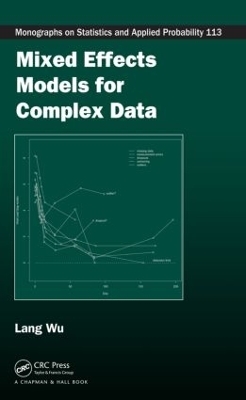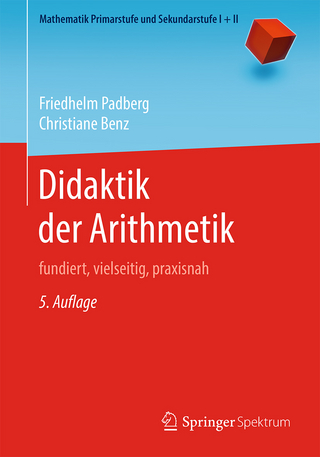
Mixed Effects Models for Complex Data
Seiten
2009
Chapman & Hall/CRC (Verlag)
978-1-4200-7402-4 (ISBN)
Chapman & Hall/CRC (Verlag)
978-1-4200-7402-4 (ISBN)
Reviews incomplete data problems in mixed-effects models for longitudinal studies and discusses various approaches, including some commonly used simple methods, EM algorithms, and multiple imputation methods. This work also covers other models for longitudinal data, such as marginal models with missing values.
Although standard mixed effects models are useful in a range of studies, other approaches must often be used in correlation with them when studying complex or incomplete data. Mixed Effects Models for Complex Data discusses commonly used mixed effects models and presents appropriate approaches to address dropouts, missing data, measurement errors, censoring, and outliers. For each class of mixed effects model, the author reviews the corresponding class of regression model for cross-sectional data.
An overview of general models and methods, along with motivating examples
After presenting real data examples and outlining general approaches to the analysis of longitudinal/clustered data and incomplete data, the book introduces linear mixed effects (LME) models, generalized linear mixed models (GLMMs), nonlinear mixed effects (NLME) models, and semiparametric and nonparametric mixed effects models. It also includes general approaches for the analysis of complex data with missing values, measurement errors, censoring, and outliers.
Self-contained coverage of specific topicsSubsequent chapters delve more deeply into missing data problems, covariate measurement errors, and censored responses in mixed effects models. Focusing on incomplete data, the book also covers survival and frailty models, joint models of survival and longitudinal data, robust methods for mixed effects models, marginal generalized estimating equation (GEE) models for longitudinal or clustered data, and Bayesian methods for mixed effects models.
Background materialIn the appendix, the author provides background information, such as likelihood theory, the Gibbs sampler, rejection and importance sampling methods, numerical integration methods, optimization methods, bootstrap, and matrix algebra.
Failure to properly address missing data, measurement errors, and other issues in statistical analyses can lead
Although standard mixed effects models are useful in a range of studies, other approaches must often be used in correlation with them when studying complex or incomplete data. Mixed Effects Models for Complex Data discusses commonly used mixed effects models and presents appropriate approaches to address dropouts, missing data, measurement errors, censoring, and outliers. For each class of mixed effects model, the author reviews the corresponding class of regression model for cross-sectional data.
An overview of general models and methods, along with motivating examples
After presenting real data examples and outlining general approaches to the analysis of longitudinal/clustered data and incomplete data, the book introduces linear mixed effects (LME) models, generalized linear mixed models (GLMMs), nonlinear mixed effects (NLME) models, and semiparametric and nonparametric mixed effects models. It also includes general approaches for the analysis of complex data with missing values, measurement errors, censoring, and outliers.
Self-contained coverage of specific topicsSubsequent chapters delve more deeply into missing data problems, covariate measurement errors, and censored responses in mixed effects models. Focusing on incomplete data, the book also covers survival and frailty models, joint models of survival and longitudinal data, robust methods for mixed effects models, marginal generalized estimating equation (GEE) models for longitudinal or clustered data, and Bayesian methods for mixed effects models.
Background materialIn the appendix, the author provides background information, such as likelihood theory, the Gibbs sampler, rejection and importance sampling methods, numerical integration methods, optimization methods, bootstrap, and matrix algebra.
Failure to properly address missing data, measurement errors, and other issues in statistical analyses can lead
Lang Wu is an associate professor in the Department of Statistics at the University of British Columbia in Vancouver, Canada.
Introduction. Mixed Effects Models. Missing Data, Measurement Errors, and Outliers. Mixed Effects Models with Missing Data. Mixed Effects Models with Covariate Measurement Errors. Mixed Effects Models with Censoring. Survival Mixed Effects (Frailty) Models. Joint Modeling Longitudinal and Survival Data. Robust Mixed Effects Models. Generalized Estimating Equations (GEEs). Bayesian Mixed Effects Models. Appendix. References. Index. Abstract.
| Erscheint lt. Verlag | 18.11.2009 |
|---|---|
| Zusatzinfo | 19 Tables, black and white; 22 Illustrations, black and white |
| Sprache | englisch |
| Maße | 152 x 229 mm |
| Gewicht | 1600 g |
| Themenwelt | Mathematik / Informatik ► Mathematik |
| Naturwissenschaften ► Biologie | |
| ISBN-10 | 1-4200-7402-4 / 1420074024 |
| ISBN-13 | 978-1-4200-7402-4 / 9781420074024 |
| Zustand | Neuware |
| Haben Sie eine Frage zum Produkt? |
Mehr entdecken
aus dem Bereich
aus dem Bereich
Versteckte Beiträge, die die Welt verändert haben
Buch | Hardcover (2023)
Springer (Verlag)
29,99 €
Von Logik und Mengenlehre bis Zahlen, Algebra, Graphen und …
Buch | Softcover (2024)
De Gruyter Oldenbourg (Verlag)
74,95 €
fundiert, vielseitig, praxisnah
Buch | Softcover (2021)
Springer Berlin (Verlag)
32,99 €


